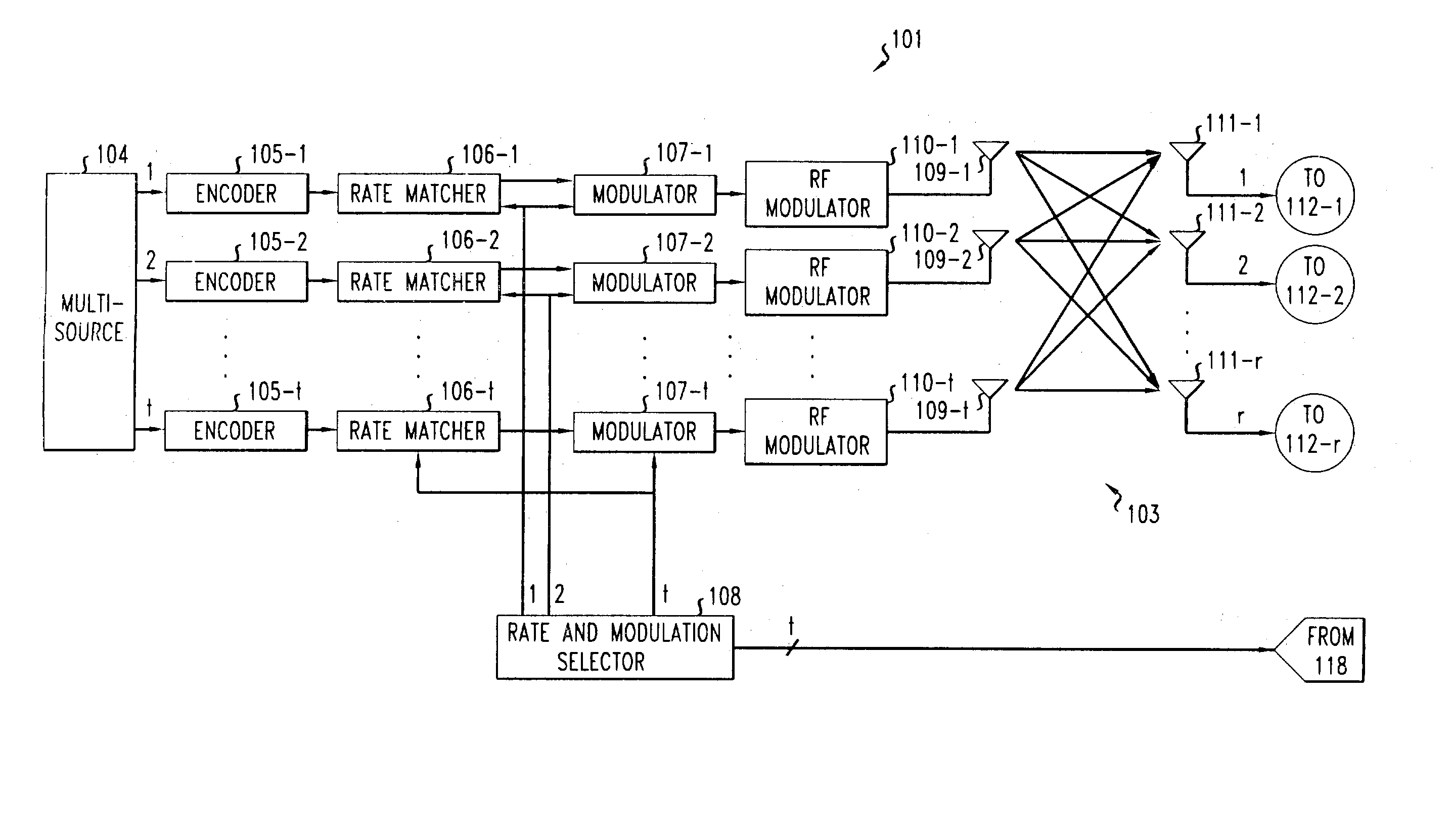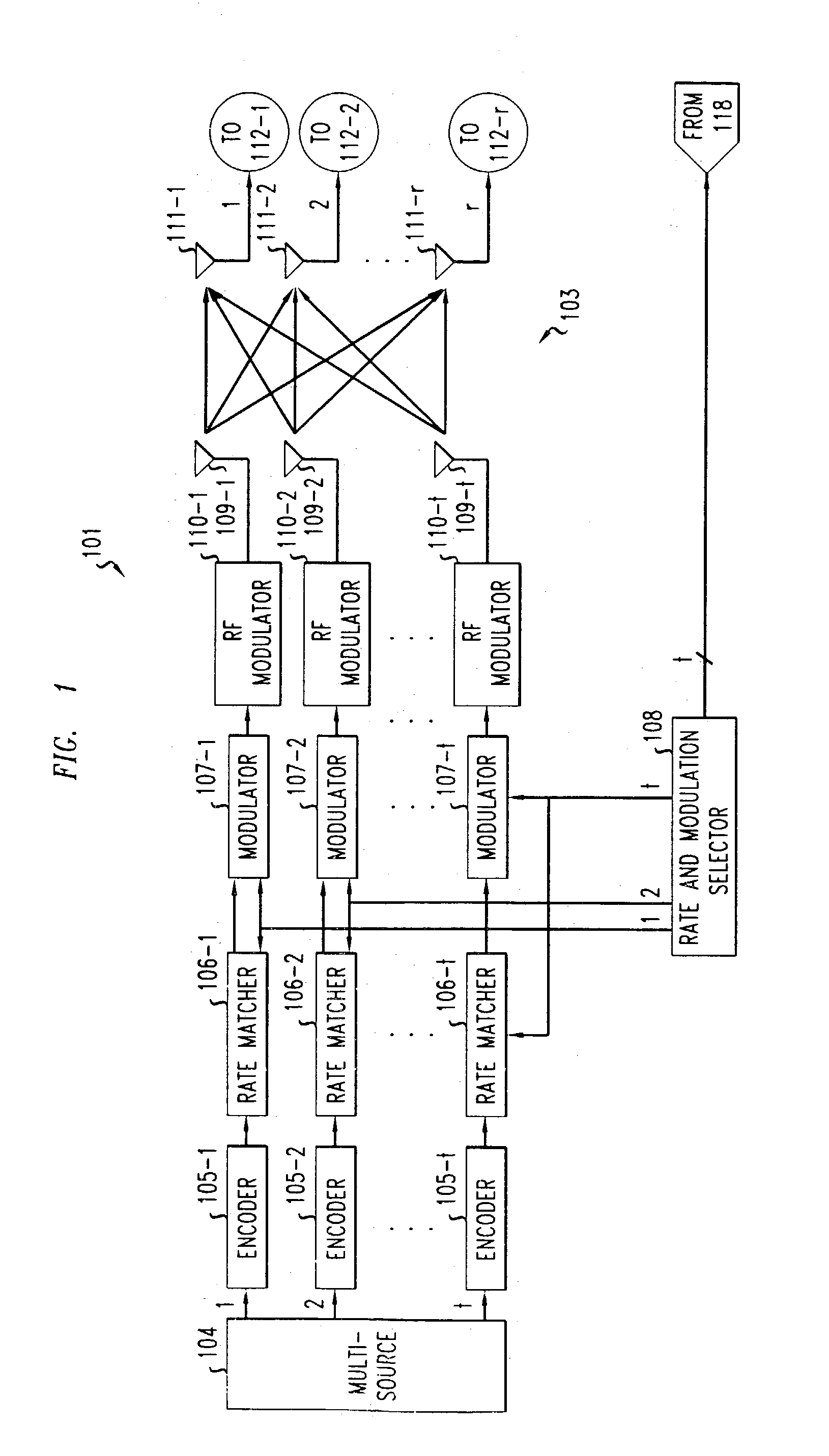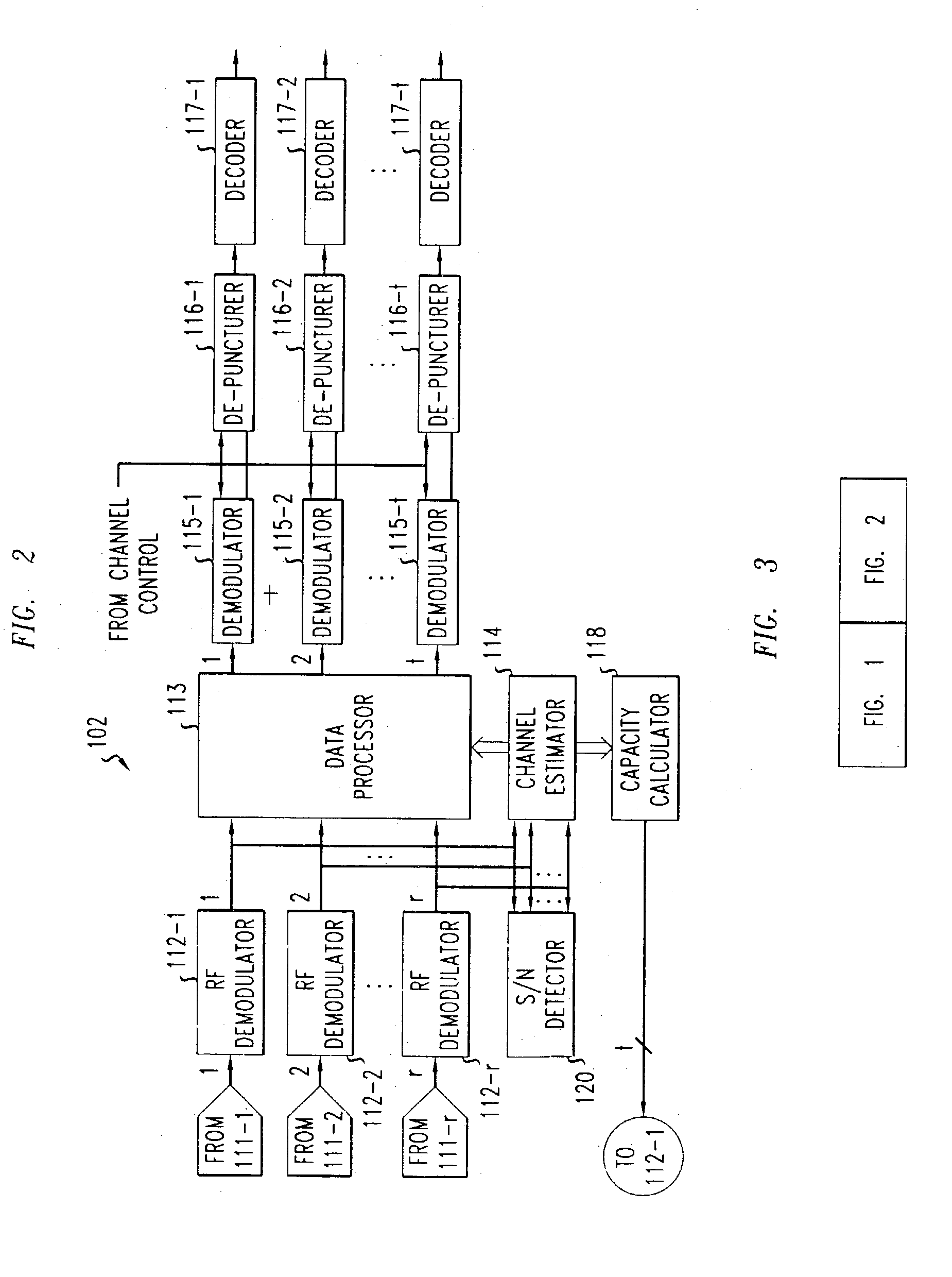Method of determining the capacity of each transmitter antenna in a multiple input/multiple output (MIMO) wireless system
a wireless system and transmitter antenna technology, applied in the field of wireless communication, can solve the problems of difficult to determine the channel qualities of each data stream, and the maximum transmission rate may not optimize the use of individual channels,
- Summary
- Abstract
- Description
- Claims
- Application Information
AI Technical Summary
Problems solved by technology
Method used
Image
Examples
Embodiment Construction
[0009]With reference to FIGS. 1 and 2, a multiple input / multiple output wireless communications system is shown that includes a transmitter end 101 that is communicating with a receiver end 102 over a wireless communication channel 103 via a plurality, t, of simultaneously transmitted data streams. Each of the t data streams transmitted between the transmitter end 102 and the receiver end 103 can be derived from data signals, voice signals, video signals, or any combination of these or other types of digital signals. The communication system can be any type of wireless system employing, for example, well-known time division multiple access (TDMA) techniques, code division multiple access (CDMA) techniques, or any other type of multiple access technique.
[0010]The t data streams that are transmitted over separate channel paths within the communication channel 103 are subject to various impairments that can induce amplitude and phase variations into the received data streams. These imp...
PUM
 Login to View More
Login to View More Abstract
Description
Claims
Application Information
 Login to View More
Login to View More - R&D
- Intellectual Property
- Life Sciences
- Materials
- Tech Scout
- Unparalleled Data Quality
- Higher Quality Content
- 60% Fewer Hallucinations
Browse by: Latest US Patents, China's latest patents, Technical Efficacy Thesaurus, Application Domain, Technology Topic, Popular Technical Reports.
© 2025 PatSnap. All rights reserved.Legal|Privacy policy|Modern Slavery Act Transparency Statement|Sitemap|About US| Contact US: help@patsnap.com



